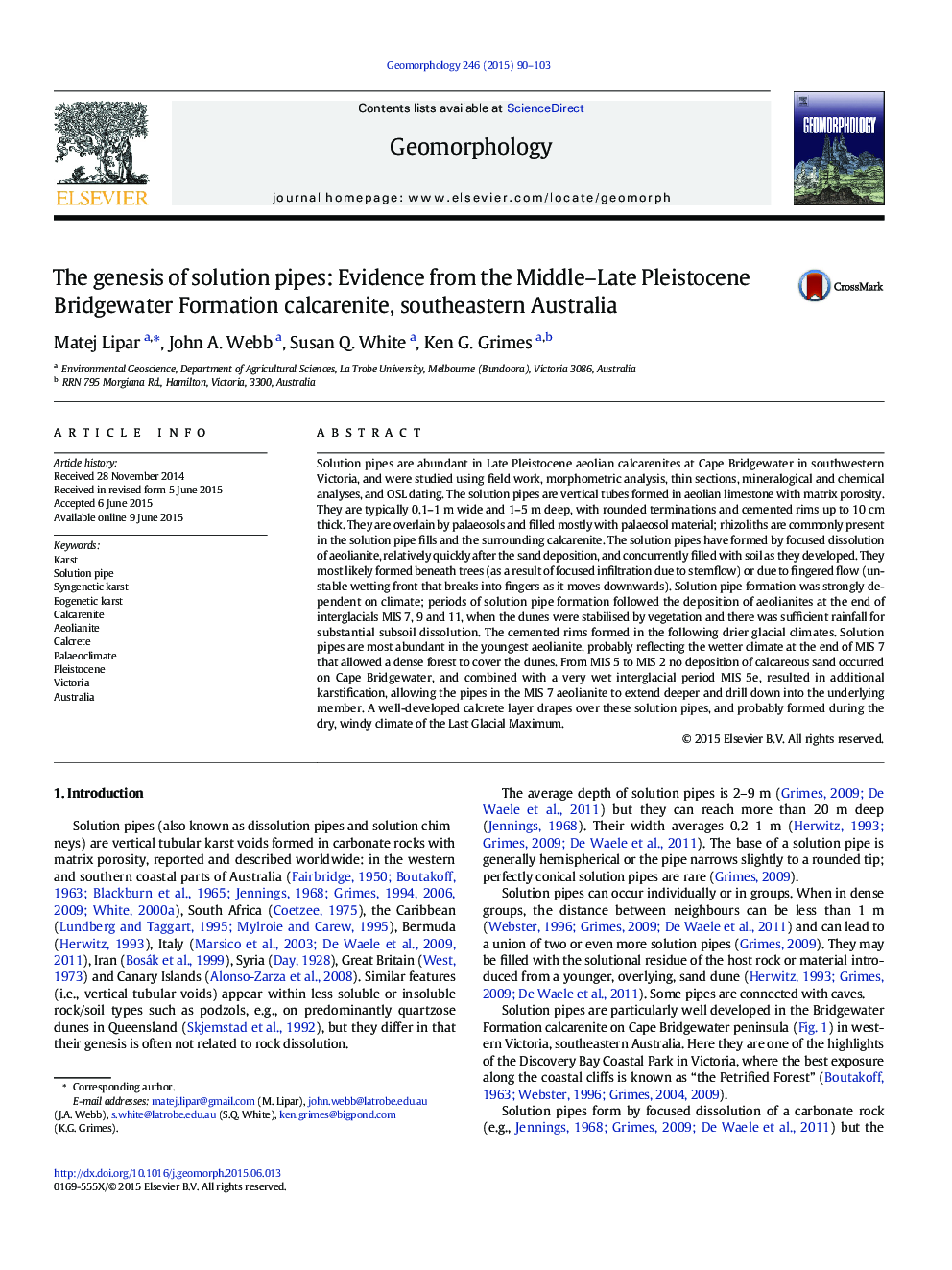| کد مقاله | کد نشریه | سال انتشار | مقاله انگلیسی | نسخه تمام متن |
|---|---|---|---|---|
| 6431909 | 1635403 | 2015 | 14 صفحه PDF | دانلود رایگان |
- Solution pipes are vertical tubes formed in aeolian limestone with matrix porosity.
- In coastal western Victoria they most likely formed beneath trees or due to fingered flow.
- Solution pipe formation was strongly dependent on climate.
- Their main periods of formation were at the end of interglacial episodes MIS 7, 9 and 11.
Solution pipes are abundant in Late Pleistocene aeolian calcarenites at Cape Bridgewater in southwestern Victoria, and were studied using field work, morphometric analysis, thin sections, mineralogical and chemical analyses, and OSL dating. The solution pipes are vertical tubes formed in aeolian limestone with matrix porosity. They are typically 0.1-1Â m wide and 1-5Â m deep, with rounded terminations and cemented rims up to 10Â cm thick. They are overlain by palaeosols and filled mostly with palaeosol material; rhizoliths are commonly present in the solution pipe fills and the surrounding calcarenite. The solution pipes have formed by focused dissolution of aeolianite, relatively quickly after the sand deposition, and concurrently filled with soil as they developed. They most likely formed beneath trees (as a result of focused infiltration due to stemflow) or due to fingered flow (unstable wetting front that breaks into fingers as it moves downwards). Solution pipe formation was strongly dependent on climate; periods of solution pipe formation followed the deposition of aeolianites at the end of interglacials MIS 7, 9 and 11, when the dunes were stabilised by vegetation and there was sufficient rainfall for substantial subsoil dissolution. The cemented rims formed in the following drier glacial climates. Solution pipes are most abundant in the youngest aeolianite, probably reflecting the wetter climate at the end of MIS 7 that allowed a dense forest to cover the dunes. From MIS 5 to MIS 2 no deposition of calcareous sand occurred on Cape Bridgewater, and combined with a very wet interglacial period MIS 5e, resulted in additional karstification, allowing the pipes in the MIS 7 aeolianite to extend deeper and drill down into the underlying member. A well-developed calcrete layer drapes over these solution pipes, and probably formed during the dry, windy climate of the Last Glacial Maximum.
Journal: Geomorphology - Volume 246, 1 October 2015, Pages 90-103
